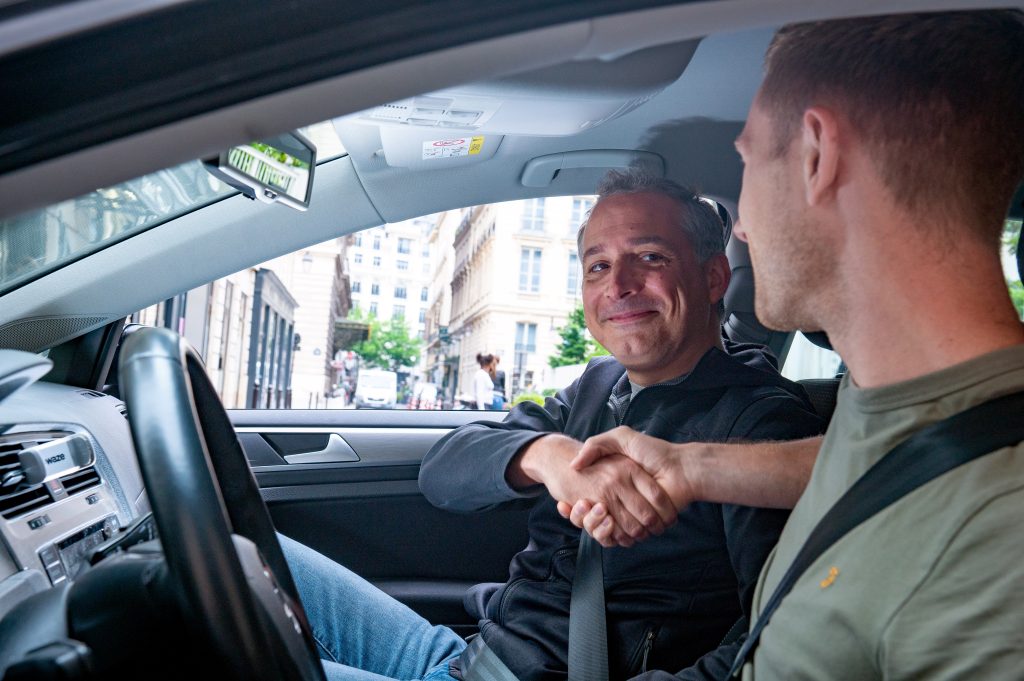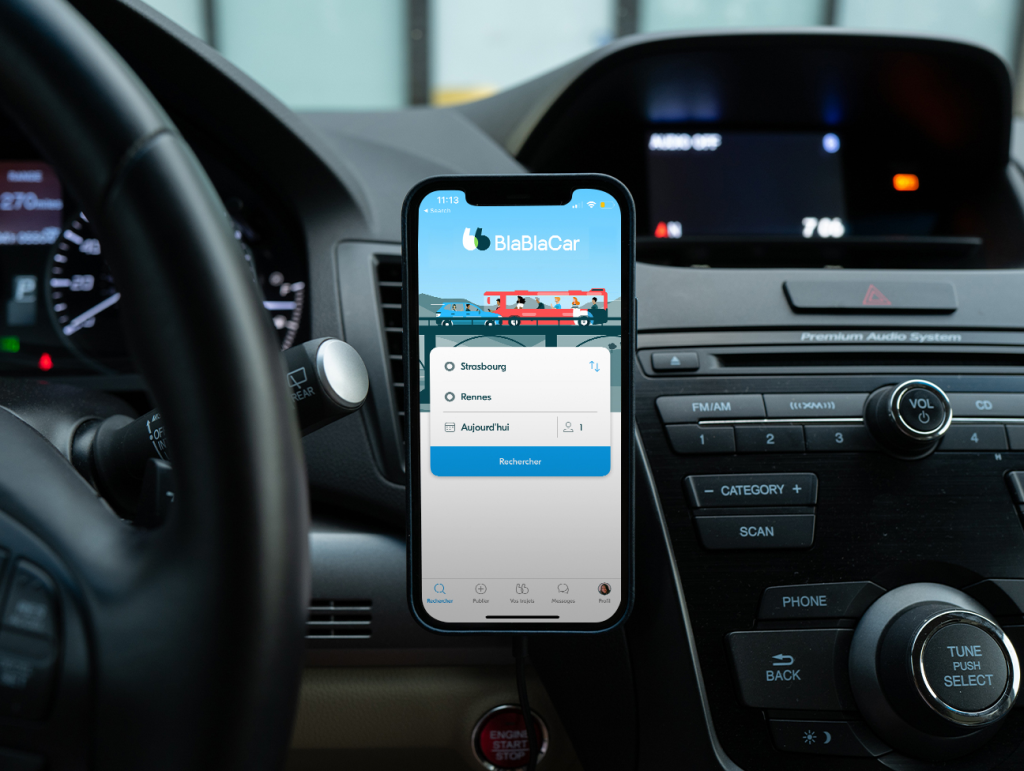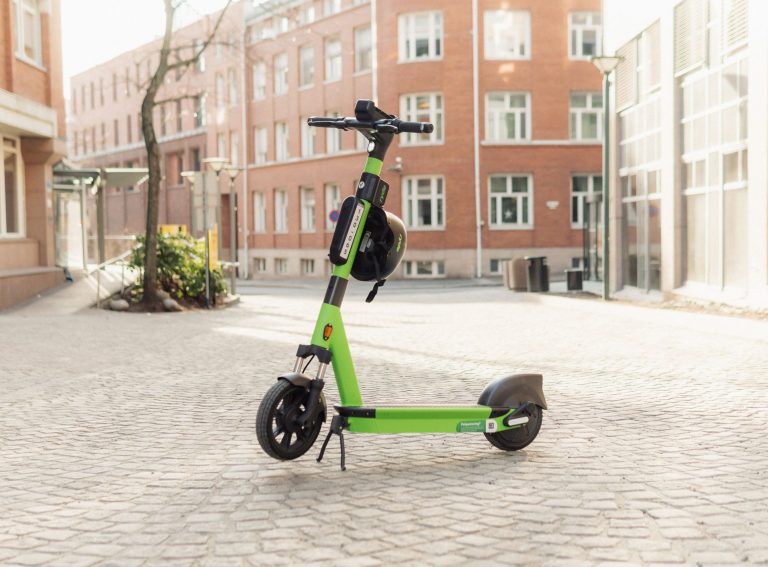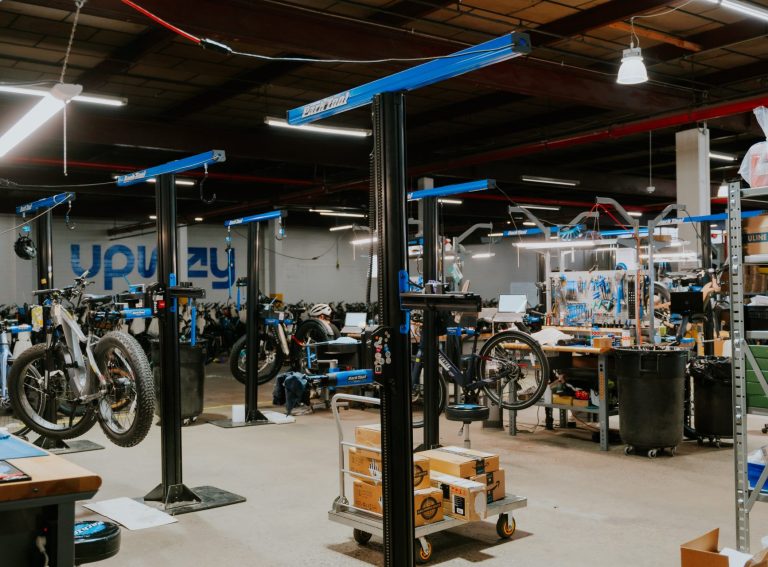By Zag industry expert Lars Christian Grødem-Olsen, an Advisor for Movability on new mobility and former Country Manager at Tier.
Last week French carpooling and bus-ticketing company BlaBlaCar secured a €100 million revolving credit facility to foster growth and fuel acquisitions.
Valued at $2 billion, the firm connects drivers and passengers willing to travel together to split the cost.
Unlike ridepooling – which sees a ride hailed by a group of passengers going in the same direction – carpooling means an individual driver sharing the cost of the drive by offering rides to those going the same way.
Two years of profitability and over €637 million in funding, BlaBlaCar is now gearing up to hone its multimodal strategy and strengthen its presence in all 21 markets.
Zag Daily: BlaBlaCar began with commutes, then pivoted to long-distance carpooling. Why the switch?
Adrien: “15 years ago the founders were trying to crack the commute use case and selling some white-label platforms to companies. It wasn’t working and they moved to long-distance carpooling where the economic model and the balance between passenger and driver made more sense. A driver who is taking a 3-hour drive might be willing to take a passenger for €20. There will be a passenger who is okay with that, and we take a booking fee. We’ve scaled globally with this model in more than 20 countries.”
Zag Daily: How has it come full circle to shorter distances with BlaBlaCar Daily?
Adrien: “We started to work on short-distance carpooling in 2018 with a beta project called BlaBlaLines, now BlaBlaCar Daily. It’s a separate app because the usage and economical model is very different. With BlaBlaCar long-distance or an IP train, it’s very rare to travel twice with the same person. When you’re commuting, that’s very common.
“With short-distance, you also need to subsidise and create a gap between what the passenger pays and what the driver actually gets. In France, 81% of bus passengers are on the 200 biggest routes. It’s the opposite with carpooling, and 91% of passengers are outside the main axis which makes sense. Cars are going to small cities where buses don’t serve.”
Zag Daily: Short distance carpooling has really taken off in France. Why is that?
Adrien: “For the drivers, the biggest reason is money savings. You are in your car for 30, 40, 45 minutes. If every passenger brings you €3, you quickly end up with over €1,000 per year of savings. With passengers, we want people that have a car to leave their car at home a couple of days per week. If you have a car and have to pay €3 or €4 per ride, you will just use your own.
“To get passengers, we need to have a ride that is free or almost free. The parallel is obvious with public transport, which is heavily subsidised by all our taxes. When you take the subway in Paris, you pay €2. The real cost is €8. If I had to pay €8 each time I took the metro, I wouldn’t do it. The same applies for short distance carpooling. Savings is the biggest driver for people to start, and then you have other reasons that keep motivating people.”

Zag Daily: What are those other reasons?
Adrien: “Mostly ecological. I’m doing something that makes sense for the planet and for myself. There’s also a social aspect. With shorter distances, you often travel with the same people. After a couple of weeks, you know who you like and repeat rides with them. Maybe you form a crew that lasts a couple of months or even years. It can become a third place before and after work where you can just talk. Now you don’t bother your wife at home with stuff from work because you already discussed all that with your carpoolers.”
Zag Daily: The French carpooling scene is fascinating. How did you convince politicians to spend €150 million incentivising drivers to start short-distance carpooling?
Adrien: “It’s much cheaper than any other transportation means from a public money standpoint. Many countries make long speeches about public transport, but you can’t make a train or a bus route for everyone. In France, 70% of people need their car to go to work. To develop a local bus or train, the cost per passenger is easily 10 times higher than carpooling. The cost of a functioning transportation system around Paris is more than €10 billion per year. €150 million is a drop in the ocean.
“There are some CO2 savings in terms of economic value and impact, but it’s also just reinvesting the money back to citizens locally, which is an easy sell.
“Our long-distance service is also well-established in France with a big usage. That made a good case for us to now replicate on short distance. The recipe is very different, but we believe we have all the actors who know how to do that.”
Zag Daily: Politicians have decided to renew the subsidy. Is that based on data that you share on the users that have actually spent this subsidy and keep on carpooling?
Adrien: “I’m really happy to hear your question because you’re looking at facts and measuring the impact. That’s something politicians don’t always do, and I would love for them to do it more because the more they see the data, the more they will help carpooling. We have basically doubled usage, and the ecosystem as a whole between 2022 and 2023.
“The €100 incentive is a big part of it, but we have data that shows the scheme works to change behaviour. You get €25 after your first trip, and €75 after your 10th trip. We are seeing that 94% continue after 10 trips. Once you start to carpool, you see that every week you could be making €30, €40. The next €100 is in the next six weeks. In the next two months, you make another €100. These 94% of users are moving to a frequency of two to four trips per week. It is a complete shift in behaviour.”
Zag Daily: You’re giving me the chills here, Adrien. That’s about as effective as a campaign can be. How do you think other governments can capitalise on what France has done?
Adrien: “France did three things. One was empowering local authorities to develop carpooling and it gave them a clear legal framework to do it. They gave the same thing to companies, allowing employers to include car pools in subsidised public transportation, and give money to people who carpool. The third is the national €100 energy saving certificates that companies like Total, ODF and Engen have to buy, which is also funding the €100 carpool subsidy. With a short distance, you can’t just tell people, “hey, it’s common sense that you should carpool.” If you want people to leave their cars, they need to have a strong incentive.”

Zag Daily: I assume there were no subsidies for the Uber ride pooling. Is that because the value proposition isn’t as clear?
Adrien: “The use case and the audience we target are different. Unless you’re an investment banker, it’s quite rare to take an Uber back and forth to go to work. Ride pooling is usually for a convenience trip, not a commute. The distance of trips is shorter and it really only works in big cities and dense areas. BlaBlaCar Daily is really spread around the country and in rural areas. It already works with 100 out of 700 local authorities in France. With carpooling, the supply is also not professional so no one makes a profit. You can’t make your living out of BlaBlaCar Daily. It’s really a cost sharing, with an audience focused on the commute.”
Zag Daily: Have the authorities seen a reduction of congestion from carpooling?
Adrien: “Not yet, but it will come. Last year, we made seven million trips on BlaBlaCar Daily, which is not a lot compared to the absolute value. This is where you move a bit from subsidy to infrastructure, because we have more and more projects of roads reserved for shared vehicles. It can be buses, a taxi, or you and your kids. This will highlight another benefit for carpoolers.”
Zag Daily: One criticism I’ve heard is that if you make more space by carpooling then you enable other people to move to the suburbs and do their commute by a private car, because there’s more space on the road. How is BlaBlaDaily solving that issue?
Adrien: “If you improve any transport or service, you will create more demand, more usage, and an opportunity for more traffic. People will not stop at, “Okay. It’s improved. That’s great.” If you build a train going from Paris to the suburbs, you will have more people living further because the train is good enough now, and the price of housing will increase there as well. Transport is a luxury good. The more you can afford, the more you will take. What we are trying to do is reduce the number of kilometers on the road, whether it’s on bikes or cars. It’s a big question. Where my mom lives in France, you still need two cars but you can try to reduce the use. We don’t yet have this impact, but that is our goal.”
Zag Daily: Do you think the new laws discouraging SUVs in Paris, or making it more expensive to drive one within the city center will affect carpooling?
Adrien: “Not really. In France, two-thirds of our usage is from outside city centers like Paris and Versailles, likely because the closer you get to Paris, the better you have Paris transport. More than 15% of trips go to or leave from a local train station, so we have people carpooling to a train station nearby and then taking the train.”
Zag Daily: Can you talk about the synergies between transit and carpooling?
Adrien: “The biggest use case at the moment is still in areas where you don’t have good power transport. It’s a passenger jumping in a car and being dropped at work without taking any other transportation. We need to be realistic. I see some MaaS projects that are totally insane, like journey planners that suggest taking three or four different transportation means in one trip. The dream is being able to coordinate things more smoothly.”
Zag Daily: What are the barriers there?
Adrien: “It’s hard for us to connect everything properly. Local public transportation is very autonomous down to the way data is structured, so it’s hard to integrate. Google Maps does it properly, but it’s still not great. Citymapper was doing it well, but only in the capital cities. We are working on integrating more information in our apps. We also make our inventory fully available to local applications to integrate the inventory. This will then redirect so it’s not a full MaaS with ticketing, but at least it shows that you have this available as well.
“For a while in France, there was a narrative about creating a MaaS application, but we are seeing it less and less. At the moment, the only people downloading a MaaS application are passengers. The driver doesn’t need one because they have a car. How do you target the drivers to offer them an alternative? Whether that is as a passenger in carpooling or something else.”
Zag Daily: That’s an interesting question. Here in Oslo, the solution to reducing congestion has been increasing tolls. That’s what research has shown as the most effective, but it also really affects low-income families.
Adrien: “It’s complex because I also believe it’s the most effective way, but is it fair? How do you tailor it? For some cases where the main use is rich people, you can put in a big toll and make exceptions for people carpooling so they can still get there. What is more complex is congestion on big highways or national roads that are far. I think that a lot of smart people have already tried many things, and I don’t pretend to have found the solution.
“In France, we have areas that have imposed low CO2 emissions that were supposed to be fully implemented by 2025. Now we are slowing it down big time because it’s not possible from a social point of view. It would explode in riot if we suddenly tell people, “Hey, you can’t come anymore.” These measures are very difficult to implement.”
Zag Daily: What do you see as the potential long-term for this industry?
Adrien: “We don’t yet know where the ceiling is. We know the playground for France where you have, depending on the study, 15 or 17 million cars per day on the road. How many can we address? I know the current obstacles we are facing but I don’t know the next ones. One obstacle now is trust and convenience. People complain that they can’t carpool every day. Even if you carpool twice a week, twice a month, it’s good. You’re not getting married. It’s low commitment.
“The other obstacle is that private cars are still seen as a symbol of liberty, freedom, and social status. When I was a kid, all the ads about cars were with a single driver. You have a nice GPS voice and a nice road, but it’s you alone in your car. It’s quite recent in France to see ads on TV with multiple people. How to make carpooling desirable and not a constraint? You can sell it as people don’t have enough money at the end of the month, so share your car. That’s a constraint, which is not cool. How do you make it sexy? This is the biggest thing to unlock at the moment.”
Zag Daily: Are you suggesting more regulations on car ads?
Adrien: “We need creativity to make carpooling cool. We’ve been successfully doing this in France with cigarettes. We’re not telling car owners they should be on the bike for a 50 km trip every morning. I was using the service during a strike and figured when it ended, that the driver would stop. He told me after carpooling a couple of times, that now he feels silly moving this one-and-a-half-ton piece of steel on the road just for himself. It’s not about blaming people that have their own car. It’s just making it cool to share it.”





